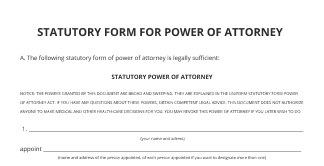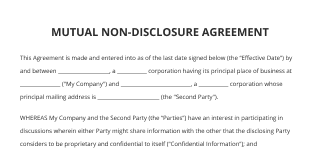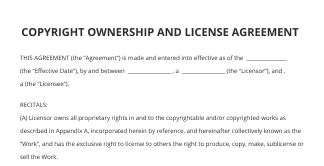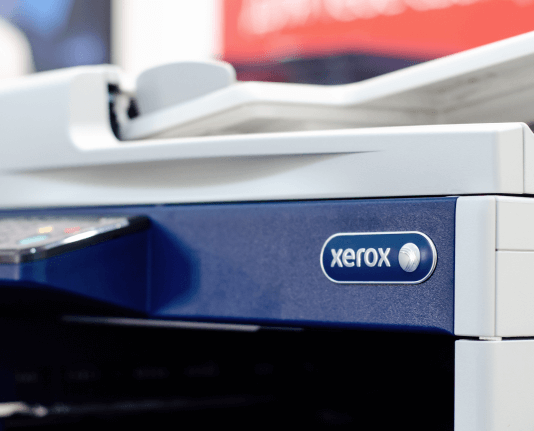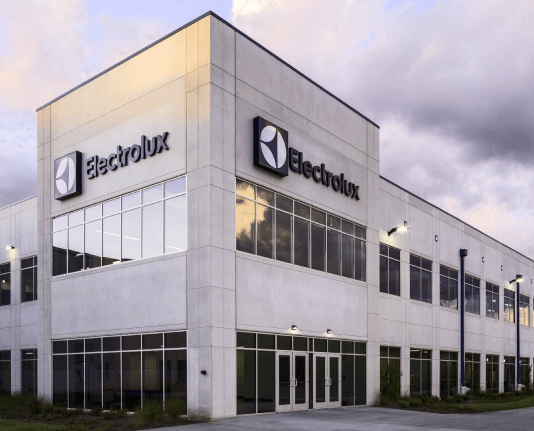Descubre El Mejor Ejemplo De Factura Para Electricista Para La Industria De La Construcción
Impulsa tu negocio con la solución de firma electrónica de airSlate SignNow
Agrega tu firma legalmente vinculante
Integra mediante API
Envía documentos condicionales
Comparte documentos mediante un enlace de invitación
Ahorra tiempo con plantillas reutilizables
Mejora la colaboración en equipo
Vea las firmas electrónicas de airSlate SignNow en acción
Soluciones de airSlate SignNow para una mayor eficiencia
Las reseñas de nuestros usuarios hablan por sí mismas






Por qué elegir airSlate SignNow
-
Prueba gratuita de 7 días. Elige el plan que necesitas y pruébalo sin riesgos.
-
Precios honestos para planes completos. airSlate SignNow ofrece planes de suscripción sin cargos adicionales ni tarifas ocultas al renovar.
-
Seguridad de nivel empresarial. airSlate SignNow te ayuda a cumplir con los estándares de seguridad globales.

Ejemplo de factura para electricista para la industria de la construcción
Crear facturas profesionales es crucial para los electricistas en la industria de la construcción para mantener un flujo de efectivo constante y organizar sus transacciones comerciales. Utilizar una plataforma confiable de firma electrónica puede hacer que este proceso sea fluido y eficiente. Esta guía te guiará a través de los pasos para usar airSlate SignNow para que tus documentos sean firmados rápida y seguramente, además de mejorar tu productividad.
Ejemplo de factura para electricista para la industria de la construcción
- Abre tu navegador web preferido y navega a la página principal de airSlate SignNow.
- Regístrate para una prueba gratuita o inicia sesión en tu cuenta existente.
- Sube el documento que necesitas que sea firmado o envíalo para firmas.
- Si planeas usar este documento repetidamente, crea una plantilla para uso futuro.
- Accede a tu archivo subido para editarlo: agrega campos rellenables e ingresa cualquier información necesaria.
- Agrega tu firma y designa campos de firma para otros firmantes.
- Haz clic en 'Continuar' para finalizar la configuración y enviar tu solicitud de firma electrónica.
En conclusión, airSlate SignNow proporciona un método eficiente para gestionar las necesidades de firma de documentos en la industria de la construcción. Su plataforma fácil de usar te permite optimizar tu flujo de trabajo y asegurar que tus facturas sean firmadas y procesadas rápidamente. ¡No pierdas la oportunidad de mejorar las operaciones de tu negocio de manera sencilla!
Comienza tu prueba gratuita hoy y descubre cómo airSlate SignNow puede simplificar tu proceso de facturación.
Cómo funciona
Funciones de airSlate SignNow que los usuarios adoran
¡Obtenga firmas legalmente vinculantes ahora!
Preguntas frecuentes invoice for electrician
-
¿Qué es un ejemplo de factura para electricista para la industria de la construcción?
Un ejemplo de factura para electricista para la industria de la construcción sirve como plantilla que describe los servicios proporcionados por electricistas, detallando costos y términos de pago. Ayuda a las empresas a mantener profesionalismo y asegurarse de que se les compense con precisión por su trabajo. Usar una factura estandarizada mejora la claridad y ayuda a mantener los registros organizados. -
¿Cómo puede ayudar airSlate SignNow a crear un ejemplo de factura para electricista para la industria de la construcción?
airSlate SignNow simplifica el proceso de crear un ejemplo de factura para electricista para la industria de la construcción proporcionando plantillas personalizables. Los usuarios pueden agregar fácilmente su marca, ajustar el diseño e ingresar detalles específicos sobre sus servicios. Esto agiliza el proceso de facturación y mejora el profesionalismo en tus transacciones. -
¿Existe un costo asociado con el uso de airSlate SignNow para facturas de electricista?
airSlate SignNow ofrece una variedad de planes de precios adaptados a diferentes necesidades comerciales, incluyendo opciones para crear un ejemplo de factura para electricista para la industria de la construcción. El costo varía según las funciones y el número de usuarios, asegurando que las empresas puedan elegir un plan que se ajuste a su presupuesto. Además, la eficiencia lograda a través de la plataforma puede generar ahorros en costos con el tiempo. -
¿Qué funciones incluye el servicio de airSlate SignNow para facturas de electricista?
Con airSlate SignNow, los usuarios tienen acceso a funciones esenciales como plantillas para facturas de electricista, capacidades de firma electrónica y seguimiento de documentos. Esto facilita enviar facturas, recibir aprobaciones y monitorear los estados de pago. Estas funciones son especialmente beneficiosas para electricistas en la industria de la construcción que buscan optimizar sus procesos de facturación. -
¿Puedo integrar airSlate SignNow con otras herramientas de software para gestionar facturas?
Sí, airSlate SignNow soporta integraciones con varios software de contabilidad y gestión de proyectos, facilitando la gestión de tu ejemplo de factura para electricista para la industria de la construcción junto con otras operaciones comerciales. Esta conectividad asegura que todos tus datos financieros estén sincronizados y actualizados, reduciendo la entrada manual y errores. -
¿Cuáles son los beneficios de usar un ejemplo de factura para electricista para la industria de la construcción?
Utilizar un ejemplo de factura para electricista para la industria de la construcción permite ciclos de facturación más rápidos, una comunicación más clara con los clientes y una mejor organización de los registros financieros. También minimiza disputas sobre los términos de pago al detallar claramente los servicios prestados. Además, tener una factura profesional puede mejorar la credibilidad y reputación de un negocio. -
¿Cómo puedo personalizar mi ejemplo de factura para electricista en airSlate SignNow?
Personalizar tu ejemplo de factura para electricista para la industria de la construcción en airSlate SignNow es sencillo. Los usuarios pueden modificar campos de texto, agregar su logo y elegir diseños que reflejen la identidad de su marca. Este nivel de personalización ayuda a garantizar que las facturas no solo cumplan su función, sino que también estén alineadas con la imagen de marca de tu negocio. -
¿Es fácil enviar y rastrear facturas de electricista usando airSlate SignNow?
¡Por supuesto! airSlate SignNow ofrece una interfaz fácil de usar que facilita enviar y rastrear tu ejemplo de factura para electricista para la industria de la construcción. Puedes monitorear cuándo se abren, firman y pagan las facturas, asegurando que estés actualizado sobre tu flujo de efectivo y reduciendo la carga administrativa de seguimiento manual.
Lo que dicen los usuarios activos — invoice for electrician
Búsquedas relacionadas con invoice for electrician
Electrician invoice example for Construction Industry
let's talk about reading commercial blueprints [Music] you have not seen the residential blueprints video that I did make sure that you check that out as well very similar kinds of stuff but residential and Commercial are different in that uh commercial are going to be engineered drawings so things in commercial a lot more specific you typically you have an engineer that's doing a bunch of calculations because there's things with buildings a lot of businesses tend to have specific type of power that affects the entire power grid so they have to figure out if they have a lot of inductive loads a lot of like motor loads and equipment and stuff like that that can really affect the utility system more than a residential application would where you've just got like you know somebody's got some computer and they've got lights and they're vacuuming and watching TV the impact on the utility is not as severe so it doesn't need to be calculated so dramatically so specifically for residential so most of the time in residences we're dealing with architectural drawings some architect just drawing stuff up and it's up to you the electrician to figure out where everything goes but with a commercial plan things are very very planned down to the T calculated very severely so let's break into actually what's inside of one of these foreign so typically the beginning of a plan is going to have the the overview of the whole property right we're going to have like kind of a street view a block view so that you know where what the whole lot is and it kind of gives you some extra information parking all kinds of stuff like that and then you're going to have some general symbols General notes General things about the entire job and then as you flip through you're going to go through um more details again in the beginning of this we're talking architectural so you're going to see all of these pages are going to be A1 A2 A10 things like that so that's just the architectural uh general information about the the structure and the design of the place the next page they show this is a kitchen so um or it's a restaurant so they're gonna show you know the the general kitchen area of this whole thing while there is you know some storage and bathrooms and stuff back there that's not like this is the main meat and cheese of what's going on and then the dining room is the other kind of like you know main thing that's going on restaurants are typically I talked about as front of house and back of house back of house is always where the food's made and the whole business is run and then the front of house is where everybody sits so just kind of a general overview of that um I'm not going to go through every page but uh we should have a uh elevation just like we had on the other one shows the front elevations we've got a ceiling floor plan so this is the existing framing plan so this building already had a whole bunch of ceiling trusses throughout the whole thing and it shows where all of the walls are and then it has a elevation so you can kind of see you know this reflected horizontally um anyway so this is you know that's General you're going to have a roof plan as well so the the ceiling plan was inside the roof plan is up on the actual roof what's going on up there because there's going to be ducks and Air Handlers and exhaust fans and all kinds of equipment going up on the roof so they just give you an overview of that then we've got more elevations so it shows walls bathrooms mirrors sconces just like we had in the residential um and then we've got an equipment plan so this is in this situation we've got all of this kitchen equipment this is a restaurant right so we've got all kinds of stuff on the cook line we've got a prep area in the back we've got a dishwashing section we've got Walker a walk-in cooler refrigerators freezers we got this whole front of house section where people take orders and there's point of sale you know you walk up and give your order a lot of times there's like little refrigerators and drink stations and salad stations and stuff like that in that area so this just shows all of the equipment that's being installed so that we know what to wire so the mechanical contractors know you know what where they need to put things another thing that we've got is a reflected ceiling plan so this is not actually the lighting plan but it shows all of the lighting on it so it shows that there's going to be all these two by four LED lights throughout here there's going to be some 1x4 lights that are going in the back spotlights it shows all these little cans and everything but this is just kind of showing what the ceiling looks like for everybody there's exhaust you know in there but that's not actually electrical again we're still in the A's so let's skip through foreign so that was all of the architectural side of things now the rest of the plan is going to be our MEP drawings or our mechanical electrical and plumbing drawings so we've got a general notes and Provisions thing we've got a symbols page but this is like everything the mechanical contractor needs to know it's a good thing it has to be an electrician to read this as well so that you understand what they have to do you don't have to go through every single detail but it's a good idea to understand what they're doing as well because the more that you know about all the other trades the more you're going to be able to like work with them and know what's going where so you're not like double doing all of the work because you didn't read the plans and you didn't know where something like a duct was going and they might have some monster duck riding through it you put a whole line of cans right above it so it just helps to know what they're doing so you can go talk to these people so a mechanical plan it's all mechanical stuff right this is the rooftop so they know where to put all their ducks and they know where the air handlers are going and where they need to make their penetrations it's same thing as the electrical it's going to give them details on what kind of Hardware what kind of mounting they need to do you know so this is all going to be inspected so this is what the mechanical contractor has to follow just like our plans you know that we give a plan we get it submitted and then we have to wire it to that and then little things are going to change for sure but it's just um overall all the big things that we need to know are in here so anyways that's mechanical then the next is electrical same thing on electrical right we have a whole plan here or a whole list of notes Provisions Legend everything so this is the general read through all of this stuff because this is everything you need to know for the job typically with a little start out well they're all gonna be different you're going to have one page that's lighting it's not going to be power it's not gonna be all your receptacles and all that stuff typically you're gonna have a lighting plan and then on a different page you're gonna have a power plan so in this case we've got lighting shows what they wanted like specific layouts of switches switch Banks to turn certain things on I when I'm wiring stuff you can see all these say L3 these say L2 L5 each one of these numbers corresponds to a specific switch bank or a specific switch because they have a lighting control system in here so I just wanted to make it very visually easy to understand that these are all on one switch and that's the T switch so I put t as yellow and I highlighted yellow I'm crazy with highlighters on jobs and I draw like every red box right here is a junction box that I've got in a ceiling and I write what panel it's going to L1 L2 so I just know where all of the junction boxes are because this isn't this whole thing is a grid ceiling so if I need to know like oh there's a junction box I I can't figure out where this is I think there was a junction box up there open up the plan oh yeah I got three of them right there I even wrote the circuit numbers and pencil next to each one so I already know what circuits are in that box that's just how I do things you guys don't have to do that but that's what I do another thing you're going to see you're gonna see these little circles with a number in them um a lot of places you'll see like one here three one three five if you look over here circle with a number in them these are all the notes for the drawings so a lot of times instead of just having long crazy notes or putting just some random little number somewhere that's not going to get seen they will call it out with a big circle and so it lets you know like hey if you're curious about this exit sign right here or this combo it's a it's an emergency and exit go to one and then you might have something I don't know what was five over here it looks like an occupancy sensor call out maybe uh switch Bank oh yeah that was a switch Bank location so they wanted to hide the switches so customers didn't have access to them so there's this back storage area that they wanted to put all of these lighting control switch banks in so they just said this is the location of the switch bank and then there's another one five actually has two call outs for that same one note so there's a switch Bank location for one of them in the switch bank for the other one so anyways you have the lighting plan these are all one kind of light they're two by fours these are one by fours and these are all cans or they're not really cans they were like kind of little mono points um but that's the lighting next page is power so we're still within ease now you notice there's no Lighting on here at all this is just call outs for equipment so uh with this specific job I remember this was years ago but what they did is they had a separate sheet that came with the plan that was just an addendum to the plan and it listed like E1 E2 E3 E4 E5 all of the equipment that was going into this kitchen so we knew exactly what model numbers Dimensions how much power it took everything so all of these little call outs they're similar to notes but you can see they're not over here but like E64 right there's so many that they had to create a separate page just for that but it wasn't actually part of the plan because it's just a schedule of equipment and Equipment often changes another thing you'll notice is that you've got all these l1-43 l1-45 um well a lot of these are hand-drawn l1-53 l1-51 those are circuit numbers and panel numbers L1 means panel L1 so I've got three panels over here I've got l1a l1b and L2 so it lets me know this is from panel L1 circuit 43. so I've got four panels that are going on the inside of this restaurant so I need to know where I'm wiring things to so that's what all of that's about I like to again highlight typically I'll do colors so anything that's panel L3 I'm going to do all of the home runs in that color just makes it easier to identify things when you're going through it you'll notice too on the the home runs that are marked by the architect or by the engineer they have these little lines on them and it's just telling you it's a hot neutral on the ground that's what those lines mean so all of their home runs that they draw they're gonna do that like this one right here is three phase so you've got one two three four and three little ones so you've got uh three different phases in neutral and grounds for each phase and then when I draw mine you know I do it a little bit different like two lets me know that it's going to be 220 stuff like that but that is your power plan it's going to show receptacles all your home runs sometimes it'll have equipment if it's a situation like this where there's lots of equipment now we have a roof plan as well so it says rooftop but we're in electrical this lets me know what all of the HVAC equipment is we've got little exhaust fans up on the roof so in the kitchen and bathrooms and stuff we have to you know have air that leaves so we have all of these pieces of equipment and it shows what circuit numbers what panels everything comes from it shows that you need a GFI circuit up there to service the equipment so it's the electrical version of the HVAC equipment plan and then we have a lighting control panel schedule this you might not have on your job but with this I said we have lighting Control Systems so it shows what circuits are specifically designated for the lighting control system and then I have a light fixture schedule another thing you're going to have on jobs is all of your light fixtures are going to be planned out ahead of time so they already know you know from from Acuity lighting 120 volts recessed can it's a four inch LED down light so if you're ever wondering like what size cans are getting put in here if you're in a commercial environment you're probably going to have a light fixture schedule so you can answer that question on your own just flip through and then uh on the actual lighting plan you'll have it'll say like L1 next to it or within the light or something like that it'll say L1 L2 L5 not panel L1 and L2 don't get confused on this uh it'll just say L1 or it might say like a A2 something like that but it shows you this that's the call out so that you can look at this lighting light fixture schedule and figure out what lights uh go where okay so on Commercial uh plans we've got the service notice on the residential we didn't have any of that that's not planned for services are planned for by Engineers uh in commercial so we have a riser diagram some people call it a one-line diagram but a one line diagram is going to show you how everything is wired at the service it doesn't necessarily have to look exactly like this but the series or the order in which things are done has to be called out so this will actually this is the service grounding detail so this shows you how they want everything grounded all connected you know from the CT and it even shows you what size grounds you need to run now it may be wrong for code but the engineer drew it so if you follow what they did they take the liability on for that because it's drawn exact it's wired to spec if something's not right then you need to get a hold of the engineers and say hey this isn't right or they might say yeah but we derated and we have our own way of doing things and we still stand behind it and you can still do it that way but a lot of times code and Engineering is a little bit off if something's like way off you know like you have way too small a wire on here for what's uh what's actually being installed like that's something you need to make a call and let the Builder know and just be like I don't feel comfortable running what they said I think it's just a misprint I think you type something up Engineers are wrong a lot you know like they're great Engineers are awesome you know they're smart they're also human and they mess up so you're going to come across drawings that are not right um so we've got the Riser diagram but it'll show this is where the meter is going they're going to have a CT enclosure which just means that they're going to have little Donuts inside of there in each hot that's coming in to the building from the Riser is going to be metered because the wires are probably so big that you can't fit them inside of an actual meter so there's low voltage wires that go to those donuts and the meter just uses low voltage wires to detect how much current is flowing through each one of those conductors through the donuts so the CTS all go in a CT enclosure that goes down to a wire way some people call these gutters auxiliary gutters but a just some kind of way to run the wire a wire away and then from then you're tapping out for um what is Note 4 say a new 240 volt 225 amp panel number five is 240 volt 225 amp three pole so you've got a single phase and a three phase um and then it shows you know like how these should go up into the building or you know go across to these other panels so from this number five panel we're going to be going up and running to a new L2 panel and then from the other number four panel from this new 225 amp single phase we're going to be running up and over to L1 which is a two section panel it's really interesting is section one section two which essentially just means it's one monster panel because there's so many circuits they don't make a panel big enough so they're going to have two panels side by side that are just wired into one they connect it to the other one so it's essentially if you just flipped them they would be one like massive panel so that's what a two section panel is it's just two different panels that are the same panel um from one of those you can see another wire or another conduit goes up and goes and feeds panel three so panel two is isolated panel uh L1 has L3 coming out of it so that's how you can read where are where's the main power coming from and what how is all of the electrical system actually working now one other thing that's really helpful to note is all of these conduits that you see there's little notes this says three number twos and a number six copper G or ground and it says one and one quarter inch C which means in a one and one quarter inch conduit another example um over here it shows what the actual Riser is it says two sets of four three out conductors that means there's gonna be four of them they're three odd and there's two sets of those so they're parallel feeding and it says two inch conduit then uh tail five foot minimum at Weatherhead so they're saying just like leave five feet at the weather head so that they have something to work with but yeah so it gives you every bit of detail that you need to know about the service really so um that's your one line diagram and then the last page that you're gonna have uh this is 601 this is your panel schedule so we have a lot of different panels going on here we've got our L1 section one L1 section two it gives you information about the actual panel it's a 225 amp mlo which means it's main lug there's not a main breaker it says it's voltage 120 240 it's a single phase three wire panel meaning hot hot neutral three wire it shows that it's a 225 amp bus or 225 amp panel so what I do you don't have to do this but it just makes it easier for me and my dummy helpers I put red black red black red black you'll notice red starts first city of Austin always does red on the left it's just different than the rest of the NEC but to make it easier visually to understand I just on my one lines I do it on all of these too so you can see single phase right there's no blue in any of that but there's blue here so this is my one three phase panel anytime I make changes I I take uh white out and like actually rewrite stuff in there because a lot of times things do change but yeah that's it panel level three panel L2 this is a 225 this is a 100 amp panel this is a 225 this is a 225 so if you ever get a bunch of equipment too and you're like oh crap I don't know which one was L2 out of all of these enclosures sitting here you can just come over and look be like oh l3s are 100 amp so that's going to be that tiny one right there it's just that's how you might see journeyman know where things are going really quickly and you're like how do you just know that it's because we've had to look at all of this stuff right we've had to look through these plans so many times and talk about and think where things are going so we have to remember what single phase and what's three phase so we just have all of this information at our disposal and we're flipping through this thing all the time so as a helper I recommend that you do the same thing start to really pay attention to what's going on in the plans I wouldn't be sitting here while everybody's working and you should be working and wiring stuff just like sitting here looking at the plan but if you're a journeyman and you got 10 people on a job site I would be sitting here looking at the plan because you should be running the other nine people on that job site making sure that everybody else has stuff that they're doing and at that point you're just keeping the train going so you need to really pour over this thing in detail to make sure that you have a plan for everybody and that you're executing that plan how it should go so if you ever just on a job and you see a journeyman just staring at a plan for like hours it might be because the job's really crazy and they need to understand all of the details and then when you've got 15 people coming up and asking you all these questions you don't have enough time to work anyways so knowing the plan very very well is really important and then anyways I'm not going to go in depth Plumbing pretty much the same thing as mechanical it's just Plumbing right same layout same information just lets them know everything and then you might have handicap accessibility stuff this was actually something at the very beginning that I didn't show but this has stuff about hinges doors openings um you know like doorways it has you know what all of the handicap rules are for things so there's ADA compliance and a lot of things this is commercial so this definitely has to have Ada involved so it has to be accessible for somebody within a wheelchair or anybody that's got mobility issues all right so that is it for commercial plans again if you have not seen the residential video make sure that you go check out the residential video very similar kind of things but there's a lot of differences to consider as well thanks for watching I love you crazy people and I'll see in the next one
Show moreObtén más para invoice for electrician
- Obtén tu plantilla de factura por hora gratuita para organizaciones sin fines de lucro
- Plantilla de factura por hora gratuita para Bienes Raíces
- Obtén tu plantilla de factura horaria gratuita para comercio minorista
- Plantilla de factura por hora gratuita para Staffing
- Obtén tu plantilla de factura horaria gratuita para la industria tecnológica
- Plantilla de factura horaria gratuita para Ciencias de los animales
- Obtén tu plantilla de factura por hora gratuita para banca
- Plantilla de factura por hora gratuita para Hostelería
Descubre otros invoice for electrician
- Legalidad de la Firma Electrónica para el Acuerdo de ...
- Legalidad de la Firma Electrónica para el Acuerdo de ...
- Legalidad de la Firma Electrónica para el Acuerdo de ...
- Desbloquea la Legalidad de la Firma Electrónica para ...
- Desbloquea el Poder de la Legalidad de la Firma ...
- Legalidad de la Firma Electrónica para Acuerdo de ...
- Legalidad de la Firma Electrónica para Acuerdo de ...
- Desbloquea el Potencial de la Legalidad de la Firma ...
- Legalidad de la Firma Electrónica para el Acuerdo de ...
- Impulsa las Asociaciones Empresariales con Firmas ...
- Legalidad de la firma en línea para el Acuerdo de ...
- Desbloquea la Legalidad de la Firma Electrónica para ...
- Desbloquea el Poder de la Legalidad de la Firma ...
- Desbloquee el Poder de la Legalidad de la Firma ...
- Asegurando la Legalidad de la Firma Electrónica para ...
- Desbloquea el Poder de la Legalidad de la Firma ...
- Desbloquea el Poder de la Legalidad de la Firma ...
- Desbloquea la Validez Legal: Legalidad de la Firma ...
- Logra la Legalidad de la Firma Electrónica para el ...
- Legalidad de la Firma Electrónica para el Acuerdo de ...





